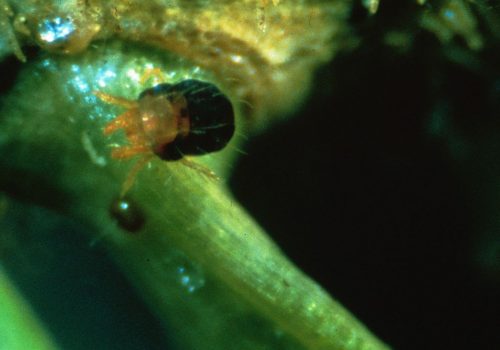Spruce spider mite, these minute (+ 0.3 mm) spider mi
Spruce spider mite (Oligonychus unuguis). These minute (+ 0.3 mm) spider mi
The spider mite lays eggs on young shoots in the fall; the eggs hibernate on the needles and scales. In spring (April, May), the eggs hatch. As many as four to five generations may develop in the summer and fall.
The cone-shaped dwarf conifer Alberta spruce ‘Conica’ (Picea glauca ‘Conica’) is very susceptible to the spruce spider mite. The infection starts at the bottom and the shady side, because the mites avoid the sun.
Where to find
- Norway spruce (Picea)
- Juniper (Juniperus)
- False cypress (Chamaecyparis)
Control
Difficult to control; once the needles turn brown and the branches wither, recovery is not possible. If the damage is minor and only at the bottom, the remaining twigs may sprout again, although this unfortunately does not happen often. Remove the mites with a powerful jet of water.
Prevention
Plant less susceptible (resistant) species. Provide good growing conditions. Avoid drying out in the summer, as this weakens the spruce.

